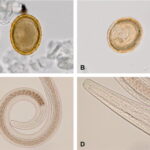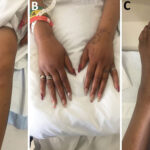Cryptosporidium is a microscopic parasite that causes cryptosporidiosis, a diarrheal disease that affects both humans and animals. This waterborne pathogen is one of the leading causes of gastrointestinal illness worldwide, particularly in regions with limited access to clean drinking water.

Causes and Transmission of Cryptosporidium Infection
Cryptosporidium infection occurs when individuals ingest the parasite’s oocysts. Common sources include:
- Contaminated drinking or recreational water
- Consuming contaminated food
- Contact with infected animals or individuals
- Exposure through unwashed hands or contaminated surfaces
Risk Factors
Individuals most vulnerable to severe cryptosporidiosis include:
- Infants and young children
- Elderly individuals
- Immunocompromised individuals (e.g., HIV/AIDS patients)
Symptoms of Cryptosporidium Infection
Symptoms typically appear 2 to 10 days after exposure and may include:
- Watery diarrhea
- Stomach cramps
- Nausea and vomiting
- Dehydration
- Fever
- Weight loss
In immunocompromised individuals, symptoms can persist longer and may become life-threatening.
Diagnosis of Cryptosporidium Infection
Accurate diagnosis requires specialized laboratory tests since Cryptosporidium oocysts are difficult to detect. Common diagnostic methods include:
- Stool sample analysis: Microscopic examination or acid-fast staining to identify oocysts
- Antigen detection tests: Highly sensitive and commonly used for confirming infection
- PCR tests: Provide precise identification of Cryptosporidium DNA
Treatment for Cryptosporidium Infection
Cryptosporidiosis is often self-limiting in healthy individuals, but treatment may be necessary for severe cases. Treatment strategies include:
Medications
- Nitazoxanide: An FDA-approved antiparasitic drug that shortens symptom duration
- Antidiarrheal agents: Help manage dehydration and discomfort
- Rehydration therapy: Essential to restore lost fluids and electrolytes
Supportive Care
For immunocompromised individuals, antiretroviral therapy (ART) can improve immune response and help control the infection.
Prevention of Cryptosporidium Infection
Effective preventive measures include:
- Practicing proper hand hygiene
- Drinking treated or filtered water
- Washing fruits and vegetables thoroughly
- Avoiding swallowing water in swimming pools or lakes
- Using proper sanitation in childcare settings and pet areas
Water Treatment Methods
Cryptosporidium oocysts are resistant to chlorine. Recommended water treatment options include:
- Boiling water for at least one minute
- Using filters certified to remove Cryptosporidium
Lifecycle of Cryptosporidium
Cryptosporidium follows a complex lifecycle involving both sexual and asexual stages. The process can be visualized as follows:
Global Impact and Public Health Concerns
Cryptosporidium is a major cause of waterborne outbreaks worldwide. Countries with inadequate sanitation infrastructure are particularly at risk. Public health efforts focus on improving water treatment facilities, sanitation practices, and awareness campaigns.
Frequently Asked Questions:
Q1: Is Cryptosporidium infection contagious?
Yes, the parasite can spread through direct contact with infected individuals or animals.
Q2: Can Cryptosporidium infection recur?
Yes, reinfection is possible, especially in individuals exposed to contaminated water or food.
Q3: How long does Cryptosporidium infection last?
Symptoms typically resolve within 1 to 2 weeks for healthy individuals but may persist longer in immunocompromised patients.
Q4: Can Cryptosporidium infection be fatal?
In severe cases, especially for immunocompromised individuals, the infection can lead to life-threatening dehydration.
Q5: Are there vaccines for Cryptosporidium infection?
Currently, no vaccine is available for Cryptosporidium infection.

